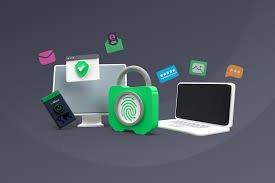Your credit score plays a vital role in your financial life. It impacts everything from getting approved for a loan to the interest rates you receive. A higher score can save you money and open up more financial opportunities. Whether you’re planning to apply for a mortgage, buy a car, or get a better credit card, improving your credit score should be a top priority. Fortunately, in 2025, there are faster, smarter ways to raise your credit score using updated tools, technology, and expert-backed strategies.
What Is a Credit Score and Why Does It Matter?
Your credit score is a three-digit number that reflects how well you manage debt. It ranges from 300 to 850, and lenders use it to determine your creditworthiness. A higher score means lower risk to lenders. That can lead to lower interest rates, higher credit limits, and easier approvals.
The most commonly used credit scores come from FICO® and VantageScore®. These scores are based on factors like payment history, credit utilization, credit age, account types, and recent inquiries. Improving even one of these areas can lead to noticeable changes in your score.
Step 1: Check Your Credit Report for Errors
Start by reviewing your credit reports from all three major bureaus — Experian, Equifax, and TransUnion. In 2025, you can still get free weekly credit reports at AnnualCreditReport.com. Look for mistakes like incorrect balances, duplicate accounts, or payments wrongly marked as late. Even small errors can hurt your score.
If you find inaccuracies, dispute them right away. Most bureaus allow you to file disputes online. The bureau must investigate and respond, usually within 30 days. Correcting a single mistake can sometimes boost your score significantly and quickly.
Step 2: Pay Off Past-Due Accounts
Late or missed payments have the biggest negative impact on your credit score. If you have any overdue accounts, bring them current as soon as possible. Contact lenders and try to negotiate a payment plan or request a goodwill adjustment once the account is paid.
In 2025, some lenders offer digital tools and AI-powered alerts to help avoid missed payments. Setting up auto-pay is also a smart move. Consistently paying your bills on time can raise your score within a few months.
Step 3: Lower Your Credit Utilization Rate
Your credit utilization rate is the amount of credit you’re using compared to your total credit limit. For example, if you have a $10,000 limit and a $5,000 balance, your utilization is 50%. Experts recommend keeping it below 30%, but staying under 10% is even better if you want fast results.
To lower this ratio quickly, pay down high balances or ask for a credit limit increase. In 2025, many banks allow you to request limit increases through mobile apps without a hard credit pull. Just make sure not to spend more once your limit goes up.
Step 4: Become an Authorized User
One fast and easy way to build credit is by becoming an authorized user on someone else’s credit card — ideally someone with a long history of on-time payments and a low balance. Their positive credit history will be added to your report and can improve your score in as little as 30 days.
This strategy is often used by parents helping their children, but you can also ask a trusted spouse, family member, or close friend. Make sure the card issuer reports authorized user activity to the credit bureaus.
Step 5: Open a New Credit Account Wisely
Opening a new account can help your credit score by increasing your overall credit limit and lowering your utilization rate. However, applying for too many new accounts in a short time can hurt your score due to hard inquiries.
If you don’t have much credit history, consider a secured credit card or a credit-builder loan. These tools are designed to help people build or rebuild credit. In 2025, many fintech companies offer instant approval and reporting to all three credit bureaus.
Step 6: Use “Experian Boost” or Similar Tools
Some tools allow you to add utility, phone, and streaming service payments to your credit report. One popular option is Experian Boost, which can increase your score by including non-traditional payment data.
In 2025, more services offer similar features, such as UltraFICO and Grow Credit. These tools can be especially helpful if you have a thin credit file and want to improve your score without taking on new debt.
Step 7: Keep Old Accounts Open
The age of your credit history matters. Closing old accounts — especially your oldest ones — can shorten your average credit age and reduce your score. If a card has no annual fee and you don’t use it often, consider keeping it open to maintain your credit history.
If you want to simplify, use those cards occasionally for small purchases and pay them off immediately. This keeps them active without adding unnecessary debt.
Step 8: Avoid Hard Inquiries When Possible
Each time you apply for credit, a hard inquiry appears on your report and may lower your score slightly. Try to limit applications to one or two within a short period. When rate shopping — for example, for a car loan or mortgage — multiple inquiries within a 14- to 45-day window are often treated as one, depending on the scoring model.
To avoid unnecessary dings, use prequalification tools. Many lenders and credit card issuers allow you to check if you’re eligible without affecting your credit.
How Fast Can You See Results?
Improving your credit score takes time, but certain actions can show results in just a few weeks. Disputing errors, paying down balances, and becoming an authorized user can create fast improvements. Most people see noticeable changes within 30 to 90 days, depending on the actions taken and how often creditors report to the bureaus.
In 2025, real-time reporting is becoming more common. That means you might see score updates faster than in the past, especially if you’re using cards from major fintech banks.
Final Thoughts
Improving your credit score fast in 2025 is possible — if you follow the right steps. Start by checking your report and fixing any errors. Then focus on lowering your balances, paying on time, and using tools that report positive activity.
Avoid unnecessary credit applications, keep old accounts open, and use digital tools to track your progress. With consistent effort and smart choices, you can raise your credit score quickly and open the door to better financial opportunities.




